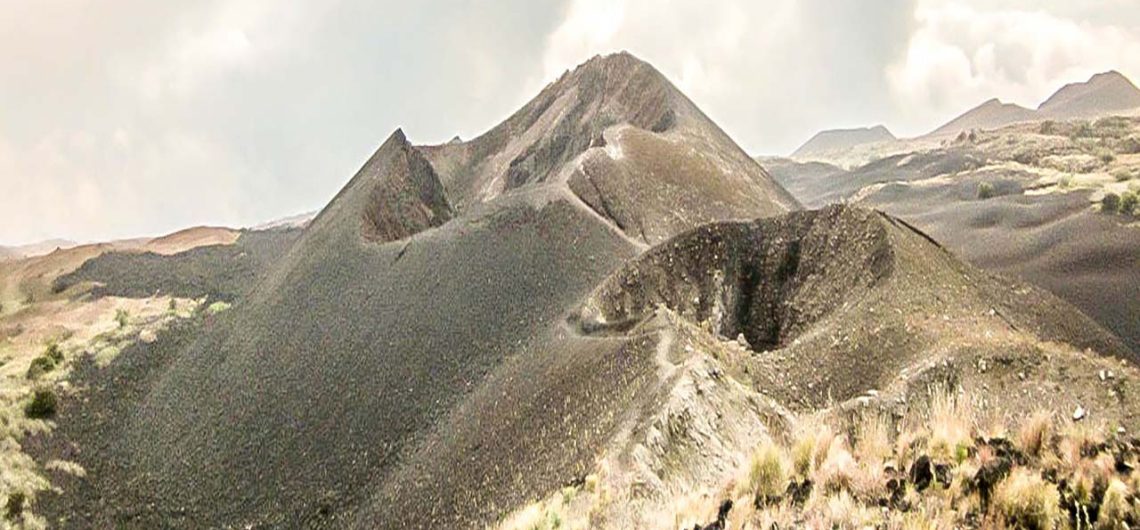Mount Cameroon, one of Africa’s largest volcanoes, rises to an elevation of 4,040 meters (13,255 feet) above the coast of west Cameroon. It is an active volcano in Cameroon’s South West region, near the city of Buea and the Gulf of Guinea. Mount Cameroon is also known as Cameroon Mountain, Fako (the name of the taller of its two summits), or Mongo ma Ndemi (“Mountain of Greatness” in the local language).
It is the highest point in Sub-Saharan Western and Central Africa, Africa’s fourth most conspicuous peak, and the world’s 31st most prominent summit. The mountain is part of the Cameroon Volcanic Line, which also includes Lake Nyos, which was the location of a tragedy in 1986.
On February 3, 2012, the most recent eruption occurred.
It rises from the coast through tropical jungle to a barren top that is chilly, windy, and occasionally snow-covered. The enormous steep-sided volcano has a basaltic-to-trachybasaltic composition and is built atop a foundation of Precambrian metamorphic rocks coated with Cretaceous to Quaternary deposits.
Mount Cameroon, also known as “Mont Cameroun” in French, is an impressive and iconic volcano located in the southwestern region of Cameroon. It holds the distinction of being the highest peak in West Africa, standing at an elevation of 4,040 meters (13,255 feet) above sea level. Mount Cameroon is not only a geological wonder but also a significant cultural and natural landmark in the region. Here are some key features and aspects of Mount Cameroon:
- Volcanic Formation: Mount Cameroon is an active stratovolcano that was formed through volcanic activity. It is part of the volcanic chain that stretches along the Cameroon Volcanic Line. The volcano has a distinctive conical shape, with a large crater at its summit.
- Biodiversity Hotspot: The slopes of Mount Cameroon are characterized by rich biodiversity, making it a biodiversity hotspot. The mountain is covered by lush tropical rainforests, montane forests, and grasslands. It is home to a wide variety of plant species, including rare orchids and unique ferns. The diverse vegetation provides habitat for numerous animal species, including primates, birds, reptiles, and insects.
- Climbing and Hiking: Mount Cameroon attracts adventure enthusiasts and mountaineers from around the world. Climbing the volcano offers a thrilling and challenging experience. There are various routes to the summit, ranging from moderately difficult to more demanding. The ascent typically involves traversing through different ecological zones, including forests, grasslands, and rocky slopes. The rewarding panoramic views from the summit make the climb worthwhile.
- Cultural Significance: Mount Cameroon holds cultural significance for the local communities, particularly the Bakweri people. They consider the mountain as a sacred place and believe it to be the abode of spirits. Cultural festivals and rituals are held in honor of the mountain, reflecting the strong connection between the local people and their natural surroundings.
- Sporting Events: Mount Cameroon is famous for hosting the annual Mount Cameroon Race of Hope, a challenging footrace that attracts both local and international athletes. Participants race from the town of Buea to the summit and back, covering a distance of approximately 38 kilometers (24 miles). The race showcases the physical prowess and endurance of athletes in a unique natural setting.
- Conservation Efforts: Efforts are underway to protect and preserve the natural heritage of Mount Cameroon. The mountain and its surrounding areas have been designated as a national park, ensuring the conservation of its unique ecosystems and promoting sustainable tourism. The park authorities work towards maintaining the fragile balance between human activities and the preservation of the mountain’s natural resources.
Mount Cameroon stands as a symbol of natural beauty, cultural heritage, and adventure. It offers visitors an opportunity to explore its diverse landscapes, immerse themselves in the local culture, and witness the remarkable volcanic features that have shaped the region over time.
Mount Cameroon National Park
The National Park of Mount Cameroon (Parc National du Mont Cameroun) was established in 2009. It has a total size of 581.23 km2. The park encompasses the old Etinde Forest Reserve as well as the majority of the Bomboko Forest Reserve. A section of the Bomboko Forest Reserve remains outside the park, on the mountain’s lower northern slopes.
Mount Cameroon Itinerary:
Day 1: Arrival in Buea
- Arrive in the town of Buea, located at the foot of Mount Cameroon.
- Check into your accommodation and take some time to rest and acclimatize to the altitude.
Day 2: Forest Trek
- Begin your trekking adventure by entering the lush tropical rainforests surrounding Mount Cameroon.
- Follow experienced guides who will lead you through the diverse vegetation, pointing out unique plant species along the way.
- Enjoy the sounds of nature and keep an eye out for wildlife such as monkeys and colorful bird species.
- Set up camp for the night within the forest, immersing yourself in the peaceful atmosphere.
Day 3: Ascend to High Altitude
- Continue your ascent through various ecological zones, including montane forests and grasslands.
- Experience a change in the landscape as you gain elevation, with breathtaking views opening up.
- Reach a higher campsite where you will spend the night, enjoying the cool mountain air and panoramic vistas.
Day 4: Summit Day
- Wake up early in the morning for the final push to the summit of Mount Cameroon.
- Follow the rocky slopes and steep paths, guided by experienced climbers who will ensure your safety.
- Witness the sunrise from the summit, a truly awe-inspiring moment as you take in the vast landscapes below.
- Celebrate your achievement and capture memorable photos before descending back to the campsite.
Day 5: Descent and Return to Buea
- Begin your descent from the high-altitude camp, retracing your steps through the different ecological zones.
- Take your time to appreciate the beauty of the surroundings and spot any wildlife along the way.
- Reach the base of Mount Cameroon and bid farewell to your guides and fellow trekkers.
- Return to Buea and relax in your accommodation, reflecting on the incredible journey you have undertaken.
Day 6: Explore Buea and Departure
- Spend the day exploring the town of Buea, known for its colonial charm and vibrant local markets.
- Visit the Botanic Garden and learn about the region’s unique plant species.
- Immerse yourself in the local culture by sampling traditional cuisine and interacting with the friendly residents.
- Depart from Buea with unforgettable memories of your Mount Cameroon adventure.
Note: The itinerary may vary depending on the tour operator, weather conditions, and individual preferences. It is essential to choose a reputable tour operator with experienced guides for a safe and enjoyable Mount Cameroon trekking experience.
![]()


Comments